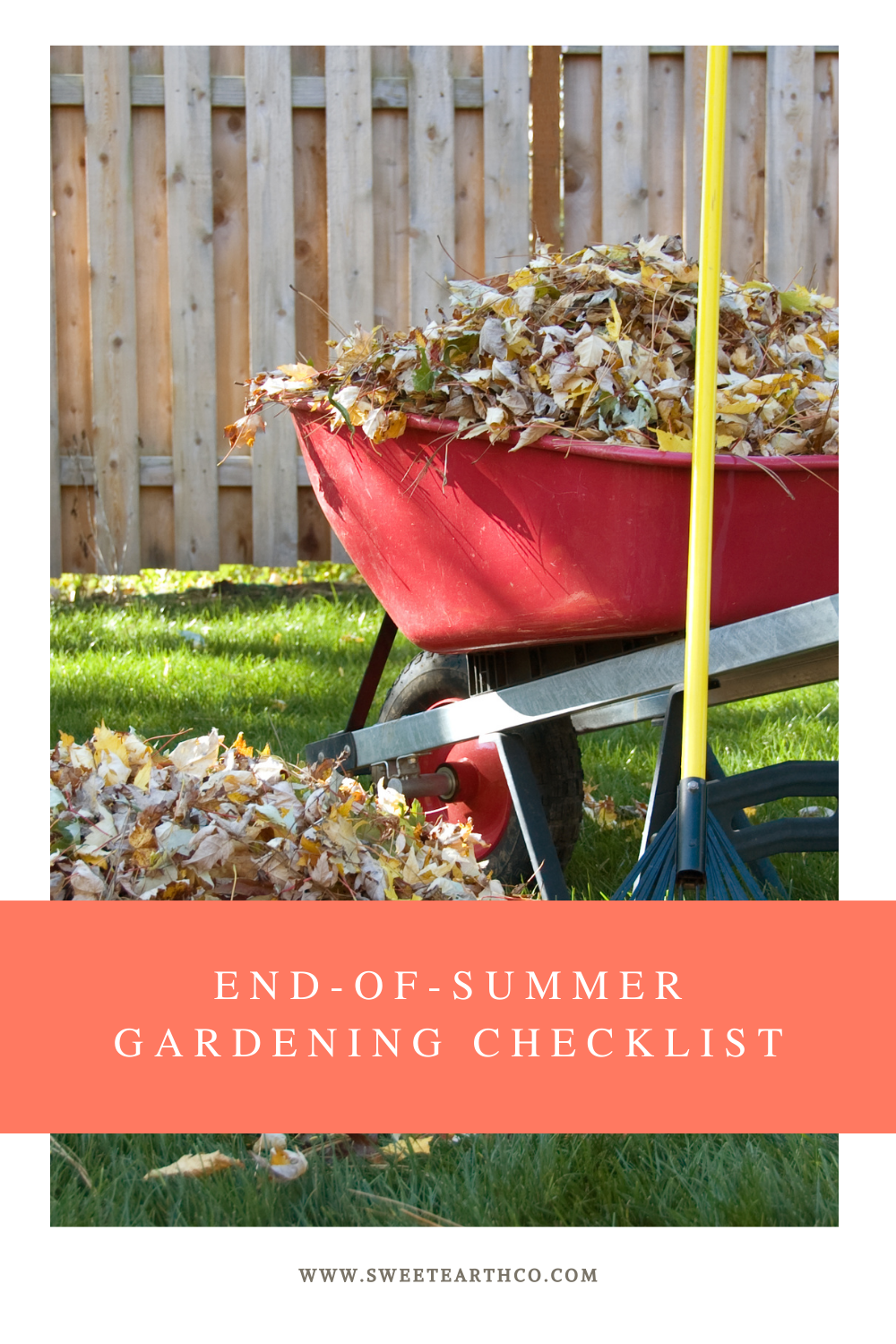End-of-Summer Gardening Checklist
The end of summer doesn’t mean the end of gardening for the year. There is plenty you can still do in the fall!
Even if your garden got away from you a bit this summer — maybe your flowers or veggies didn’t get harvested, or weeds got a bit out of control — you can start again in the fall!
Here are a few things you can do in late summer and early fall to continue gardening through the season.
Collect Seed
You can grow more of your favorite annuals and perennials by collecting their seed. Move through your flower, plant, and vegetable fields to collect seeds for future harvest. I usually plant about 10% extra every season to allow those plants to go to seed so that I can collect and save for next season. The best plants to save seed from are the open-pollinated and heirloom varieties because these will produce new plants that are carbon-copies of the original. If you save seeds from hybrid varieties, they likely won't grow into the exact same plants next year.
Harvest seeds after the plant is done blooming and flower head has turned brown or petals have fallen off with only the seed head remaining. Collect the seed heads in a brown paper bag and let dry out. Once dry, you can shake the bag and the seeds will more easily fall off of the seed head. Place seeds in an envelope or airtight container and store in a cool, dark, dry location. I store mine in the crisper drawer of my refrigerator.
Test Soil
Now is the time to address any nutrient deficiencies. Collect soil samples from various areas of your garden and send them out to test.
Then, based on results, add natural amendments to improve its quality and nutrients.
Psst…stay tuned for next week’s blog post all about soil, plus a free soil health guide.
Start Cool Flowers
If you haven’t yet read our blog post “Cool Flowers” You Can Plant In the Fall for Spring Bounty, that’s a great place to start, but the long and short of it is that there are some varieties of spring flowering annuals which will produce earlier, more robust spring harvests if planted in the fall.
These flowers are either direct seeded (with seeds sown directly into prepared beds), or transplanted (with seedlings begun in starter trays in a greenhouse or inside your home, then planted into prepared beds).
Each season we test our soil, add the needed amendments, then start our cool flowers planting. At Sweet Earth Co. we direct seed bupleurum, bachelor button, larkspur, nigella and poppies. We also start sweet peas, snapdragon, campanula, ranunculus and anemone inside then transplant them out and protect them from the elements.
Plant or Transplant Perennials, Shrubs & Bulbs
Fall is the best time to add more flowering shrubs and new flowering perennials. The combination of warm soil and cool air stimulates root growth to help your trees, shrubs and perennials get established before the ground freezes. This fall we are adding new clethra (Sweet Bush) varieties and native perennials such as eupatorium (Joe Pye), yarrow and baptisia.
Fall is also a good time divide and transplant perennials and ornamental grasses. We will be dividing some of our mature peony plants and some of our echinacea (pink cone flower) this fall so that we can expand our stock.
If you want to have spring-flowering bulbs such as tulips, alliums, and daffodils, then you will need to plant these in the fall. Spring-flowering bulbs require 10 to 13 weeks of temperatures below 40 degrees Fahrenheit before sprouting. They also need this time to put down good root growth before flowering.
Plant Cover Crops & Ground Covers
Whether veggie garden, flower garden, or perennial beds and borders, all garden areas should be covered with ground cover or mulch. This helps suppress weeds, protects against erosion, minimizes soil temperature fluctuations, and minimizes carbon loss when plants are not actively growing. Plus they also provide habitat for overwintering beneficial insects and wildlife.
Cover crops can also be a good option for the home gardener. Planting a winter cover crop and turning it under before planting your flowers or vegetables in spring results in a more productive garden - plus there's the added climate benefits!
For perennial beds, consider planting native ground covers such as Tiarella, Common Wild Ginger, Eastern Hay-Scented Fern, Golden Groundsel, and Creeping Phlox.
These living mulches provide many benefits to the ecosystem and, over time, to your budget as they reduce the need to truck in and spread mulch year after year.
Play the “Rose, Thorn & Bud” Game
Gardens are naturally an evolutionary practice. It’s important to learn from what was challenging and plan for the new and improved, and it’s just as important to celebrate the wins. During the growing season I often walk about the flower fields making notes and to-do lists, but it’s during this time of year, Fall, that I take a long and slow walk in the fields, I review my notes and really ponder about what worked well (the “Roses”), what didn’t (the “Thorns”) and what I want to add or do differently next season (the “Buds”). Now, I didn’t come up with the “Rose, Thorn & Bud” name, but I’ve done this exercise every year for the last 10 years, starting with my first cutting garden and continuing as it grew into a flower farm. We are forever-students in the garden.
Visit our fall chores blog post to learn more about the things we do on the flower farm each year before winter sets in.
Want all of our fall tips distilled into one simple checklist? Sign up below for a free guide & printable checklist you can follow along with as you garden this fall.


